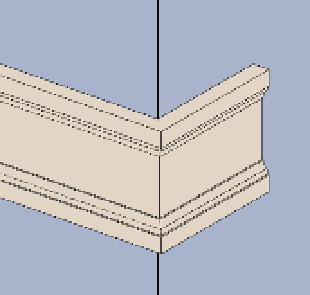Graphics Programs Reference
In-Depth Information
Figure 12.18
Modified wall
sweep returns:
(a) without the
return;
(b) with the
return checked
(a)
(b)
Modeling Techniques for Basic Walls
In the previous sections, we explored methods to create a variation within the structure of a
basic wall type. When you begin to use these types to assemble your building model, there are
still more methods at your disposal to further customize how walls are applied. Let's take a look
at techniques you can use for modeling basic walls once they are placed in a project. You can use
some of these techniques for stacked walls and curtain walls as well.
Extending Wall Layers
In many types of construction, you'll need layers of materials to extend within or beyond the
constraints of the wall. Some common examples include the extension of sheathing and siding
on an exterior wall or gypsum wallboard extending only slightly above the ceiling for interior
partitions (Figure 12.19).
Figure 12.19
examples of wall
layers extending
past or within
the constraints
of the wall
Enabling the extension of layers within a wall assembly requires you to unlock specific
edges in the section preview of the Edit Assembly dialog box. Once layers have been unlocked,
an instance parameter of the wall becomes active: either Base Extension Distance or Top
















